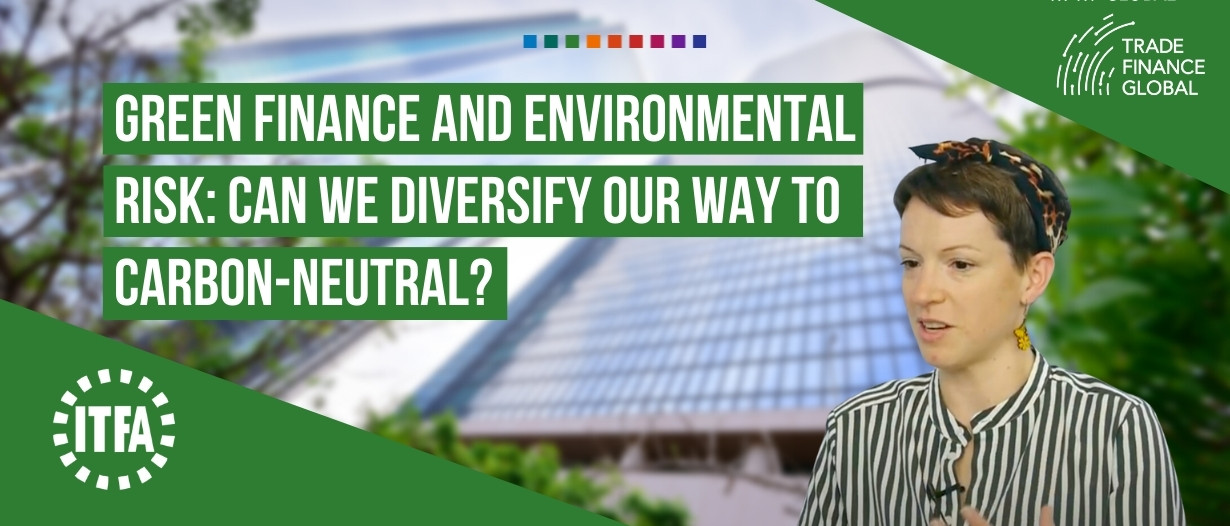With this year’s biggest climate conference, COP26, now behind us, 2021 may turn out to be a landmark year for raising awareness of green finance.
Global capital is now undoubtedly onboard – to the tune of $130 trillion, if we are to take UN Special Envoy Mark Carney’s word for it – and green finance initiatives are gaining traction in some of the world’s largest economies, especially the UK.
Make no mistake: the ???? is now there if the ???? truly wants to arrest the #climatecrisis
— Mark Carney (@MarkJCarney) November 3, 2021
Today, through the Glasgow Financial Alliance for Net Zero #GFANZ, over $130 trillion of capital from 450+ firms across 45 countries is committed to transforming the economy #COP26
Dr. Joanna Burch-Brown, senior lecturer in philosophy at the University of Bristol, has been following the emergence of green finance from an environmental ethics perspective, and believes that the tools and policies we now have at our disposal are the most extensive yet.
“I think we’re in a moment where huge, positive change is possible,” she told Trade Finance Global (TFG) at the International Trade and Forfaiting Association (ITFA) Annual Conference.
“We have tools that we’ve never had before, we have a much higher level of awareness and motivation, and this is the moment to seize.”
The EU taxonomy – what is it and what does it do?
Chief among the new policies designed to incentivise green finance is the European Union (EU) taxonomy for sustainable activities, known as the ‘EU taxonomy’ for short, which came into effect in July 2020.
The EU taxonomy is set to be a foundational set of tools for the European Green Deal (2019-2024), which commits the EU to net zero carbon emissions by 2050, and commits €600 billion in green investments as part of the post-pandemic, NextGenerationEU Recovery Plan.
The EU taxonomy has since been expanded on by the Taxonomy Regulation, which was formally adopted on 4 June 2021, and by the EU Taxonomy Climate Delegated Act, which was also adopted on 4 June 2021.
Far-reaching in scope, the EU taxonomy rules will apply to companies both inside and outside of the EU, and will assess their economic activities based on six environmental performance criteria:
- Climate change mitigation
- Climate change adaptation
- Sustainable use and protection of water and marine resources
- Transition to a circular economy, water prevention, and recycling
- Pollution prevention and control
- Protection of healthy ecosystems
In other words, the EU taxonomy defines which economic activities can be considered “green”, and to what extent.
The taxonomy’s classification system is expected to shift investments toward a low-carbon, climate-resilient economy and avoid greenwashing.
However, it is important to note that, at present, the EU taxonomy rules do not mandate what investors can and can’t invest in.
Nor do they set mandatory requirements on environmental performance for companies or for financial products.
On the contrary, they aim to give companies and investors a clearer picture of what constitutes green and sustainable economic activity, and upon that basis, greener business, financial, and investment decisions can be made.
In April 2021 the European Commission – the EU’s executive branch – adopted a proposal for a Corporate Sustainability Reporting Directive (CSRD), which would introduce mandatory sustainability reporting standards, along the lines of similar legislation already enacted in the UK.
At present, however, the CSRD remains a draft directive, and is not expected to come into effect until 2023.
The #EUGreenDeal is our growth strategy. Climate neutrality, our horizon.
— Ursula von der Leyen (@vonderleyen) April 21, 2021
To reach our climate goals, we need businesses fully on board.
Today the College agreed on measures to help companies shift further towards more sustainable business models.
Learning from the biofuels gold rush
As Buch-Brown points out, the EU taxonomy rules are designed to prevent the kind of unintended consequences that resulted from the biofuels gold rush of the last 20 years.
With regard to biofuels, the principle of investing in cleaner, more sustainable fuels was undoubtedly an ethical one in and of itself.
But as it turned out, there were other externalities when so many investors turned to biofuels at the same time, which led to a swelling of the sector that was harmful to the wider environment.
Taking that lesson into account, the EU taxonomy rules denote that an economic activity can be considered as “green” only if it has a positive impact on at least one of the six criteria mentioned above, and doesn’t have a negative impact on any of the others.
As Burch-Brown points out, this conceptual framework is useful for a single investment, but it still leaves much to be desired in terms of quantifying the collective impact of multiple investments by multiple players.
“My view is that the taxonomy is a great starting point, but it would still be possible for us to invest in a way that looks green according to that book, yet still has a devastating impact on the environment, which isn’t where we want to be,” she said.
“So let’s say that you invest in solar panels, but everybody else also thinks, oh, solar panels, that’s green on the EU taxonomy, I will also invest in it too.
“The taxonomy can’t capture the fact that all of those solar farms that then get built have impacts collectively on land use that are very high pressure.”
Burch-Brown reminds us that the herd mentality among the investment community, in the case of biofuels, led to widespread loss of biodiversity due to habitat destruction and deforestation.
“So what we don’t want to do is all rush towards reducing carbon emissions by doing things that end up clearing huge amounts of habitat,” she said.
“To some extent, the EU taxonomy helps us with that, because there is protection around things like highly biodiverse land.
“But it doesn’t really yet tackle that collective picture where we actually need to look at what’s the collective impact, and to be thinking of land use pressure and so on.”


































